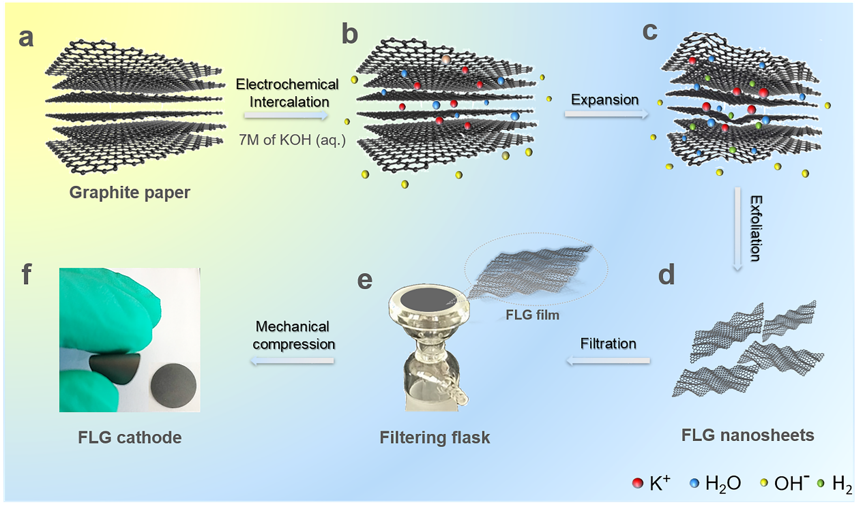H.B. Huang#, F. Zhou#, P.F. Lu, X.F. Li, P. Das, X.L. Feng,* K. Müllen*, and Z-S Wu*
Energy Storage Materials, 2020, 27, 396-404.
DOI: 10.1016/j.ensm.2020.02.011 [PDF]

Graphite is a key cathode material for aluminum-ion batteries (AIBs), but appears poor structural stability and cyclability due to theslow kinetics of intercalation and usage of conductive additives.So far, reasonable design and construction of high-conductive, flexible, binder-free graphitic film cathodes with fast kinetics of anion intercalation mechanism still remains challenging for high-power and high-energy AIBs.Herein,we report the reasonable design for facile construction of high-conductive and mechanically flexible film cathode of high-quality few-layer graphene (FLG) nanosheets for high capacity and fast AIBs, thanks to the strong synergy of ionic surface adsorption/desorption of graphene and ionic intercalation/deintercalation of graphite.The FLG nanosheets prepared by electrochemical cathodic exfoliation from graphite, exhibit predominantly 3~5 layers, extremely low ID/IGratio of < 0.05, ultrahigh C/O atom ratio of 43, and excellent solution-processability, which allow for large-area production of highly conducting (1300 S cm-1), binder-free and densely stacked FLG films as extremely stable cathodes for ultrafast AIBs. It’s worth mentioning that the resulting AIBs exhibithigh capacity of 173 mAh g-1at 1 A g-1, outstanding rate capability with exceptionally large capacity of 101mAh g-1at 10 A g-1that outperforms the most reported graphitic materials, long-term cyclability without noticeable capacity loss after 10000 cycles, and good performance at wide range of temperatures. The multiple characterizations and theoretical simulation further confirm that the unique performance is attributed to the synergistic mechanisms of diffusion-controlled intercalation and surface adsorption of FLG film.Therefore, this work will open intriguing opportunities for the development of advanced AIBs.